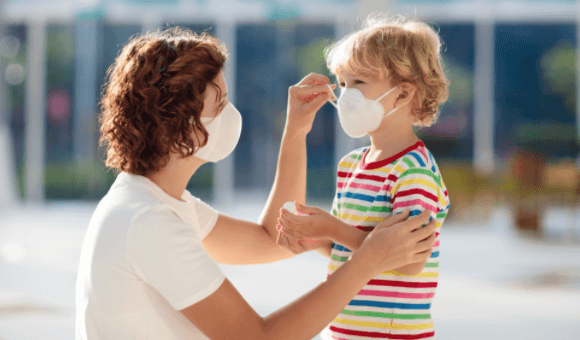Protecting Your Kids from the Omicron Variant
The omicron variant of the SARS-CoV-2 coronavirus has been spreading like wildfire around the nation in the last few weeks.
While experts are predicting that infections may begin declining soon—based on reports from other countries that saw a rapid plunge following the initial surge—our primary care doctors in Jupiter are concerned that one group remains especially vulnerable to the virus: unvaccinated children.
Because the vaccines have been approved only for those ages five and up, pediatric cases of COVID-19 have been soaring in recent weeks.
Yes, kids can be infected
The American Academy of Pediatrics (AAP) reports, “COVID-19 cases among U.S. children have reached the highest case count ever reported since the start of the pandemic. For the week ending December 30, over 325,000 child COVID-19 cases were reported.
“This is a 64 percent increase over the 199,000 added cases reported the week ending December 23 and an almost doubling of case counts from the two weeks prior.”
By the second week in January, pediatric cases had climbed to 580,000, and 830 kids a day were testing positive for the virus.
The AAP also noted that nearly 7.9 million children have tested positive for the virus since the onset of the pandemic, meaning that one out of every 10 children in this country has been infected. It’s likely that many others became infected but were never tested, or have used rapid at-home tests that were never included in official case counts.
“This is much higher than last year,” Aaron Milstone, a pediatric infectious diseases specialist at Johns Hopkins Children’s Center, told NBC’s Today show.
“The numbers I’ve been hearing for pediatrics are higher than at any point during the pandemic,” he said.
Not just at school
The lack of mask mandates in Florida schools has meant the virus can transmit more easily in poorly ventilated classrooms. But kids can pick up the virus anywhere, including at home.
The data from South Africa, where the variant was first reported, showed that “not only were the kids being hospitalized more likely to be unvaccinated but also the parents were also often unvaccinated,” Dr. Sallie Permar, pediatrician-in-chief at New York-Presbyterian/Weill Cornell Medical Center and New York Presbyterian Komansky Children’s Hospital and chair of the department of pediatrics at Weill Cornell Medicine told Today.
“It’s just really an observation that underscores how important it is for parents and all family members around a child—especially a child who’s too young for a vaccine—to get vaccinated,” she added.
Other precautions include ensuring good airflow at home, holding gatherings outdoors whenever possible, and wearing masks indoors in any setting when interacting with anyone outside the household.
Better protection recommended
Of course, as we found out early in the pandemic, face masks can not only help prevent the spread of the coronavirus but also offer the wearer a good amount of protection.
But with the advent of omicron, experts are recommending a better grade of masks for all ages, including kids.
“What we are seeing [with omicron] is, you need additional protection compared to what cloth masks were providing,” Richard Malley, senior physician at Boston Children’s Hospital Division of Infectious Diseases and professor of pediatrics at Harvard Medical School, told the Milwaukee Journal Sentinel.
“Omicron is much more transmissible than the variants we saw prior,” he explained. “If you are indoors and, particularly, if you’re around a lot of people—which is basically a classroom—you want [children] wearing a higher quality and better-fitting mask.”
The trouble with upgrading masks for kids is that the best mask—the N95 respirators—aren’t designed for them.
“Because a proper fit cannot be achieved on children . . . the N95 respirator may not provide full protection,” according to the U.S. Food and Drug Administration (FDA).
Best masks for kids
So what are some nearly-as-good alternatives?
St. Jude Children’s Research Hospital recommends the so-called white “duck-bill” N95-type masks that can protect against airborne and infectious germs, but they need to be changed when dirty or wet, or every week.
If you can find it, the Evolvetogether Ilulissat mask offers “four breathable layers, double filtration, no-tug ear loops, and a flat profile.”
Another KN95 mask “for petite faces,” meaning kids, is made by Well Before. As of this writing, however, they are not taking new orders but may do so in the future, so check back
Malley, also a professor of pediatrics at Harvard Medical School, told Boston 25 News that the best mask for kids is probably the disposable surgical mask we’ve seen since the beginning of the pandemic.
“This is probably the most comfortable and the least troublesome in terms of making sure that the child isn’t always pulling it off their nose,” he said.
This surge will likely subside within the next few weeks, but until then, it’s important to protect kids and other vulnerable people from this often-deadly virus.

